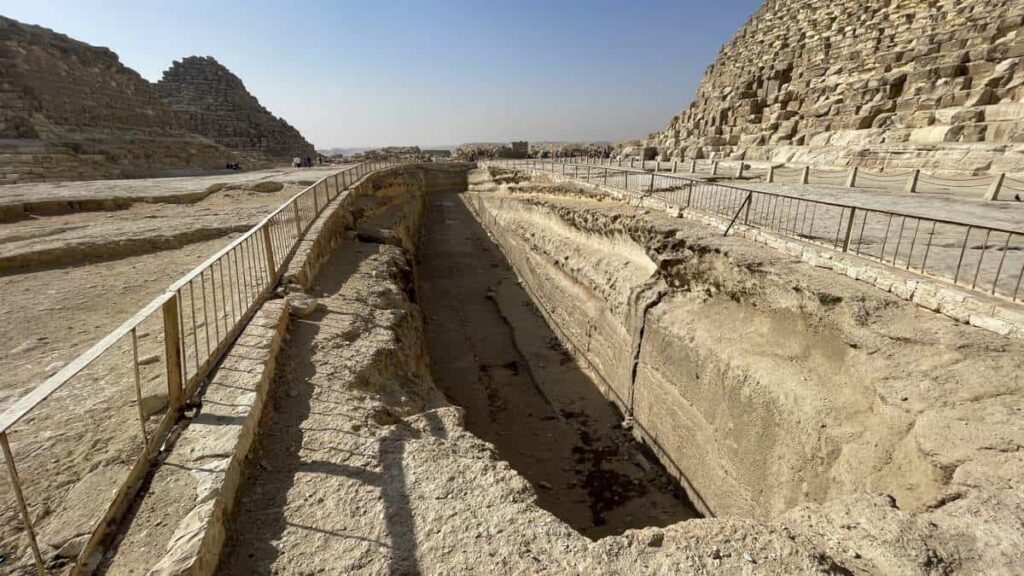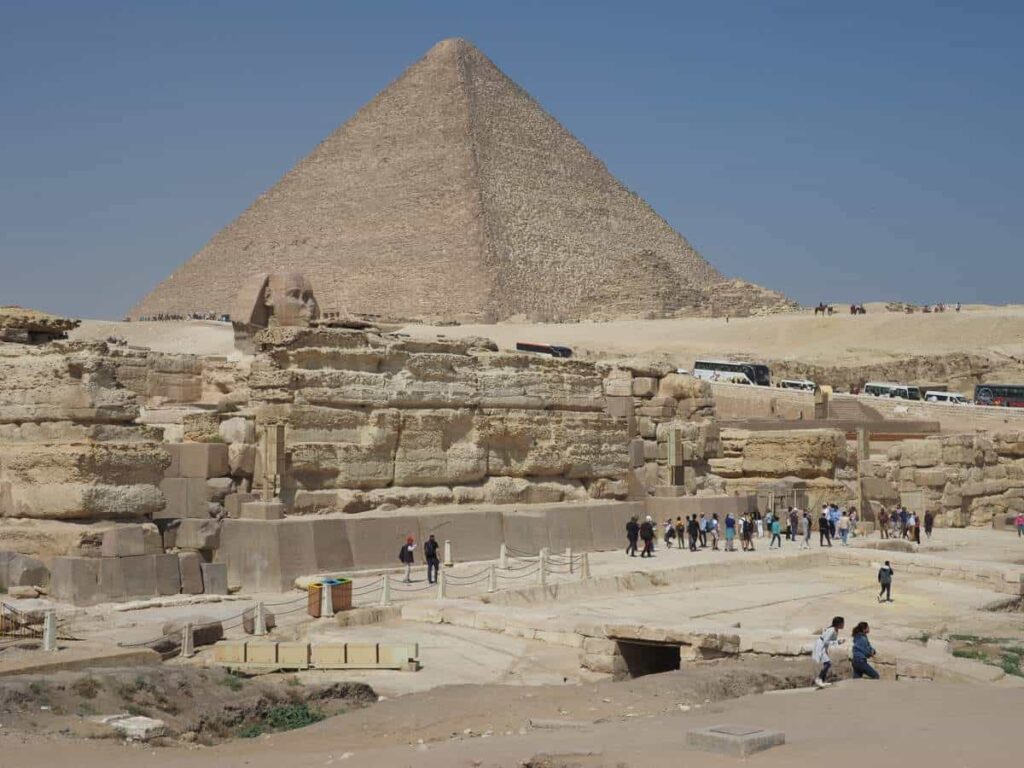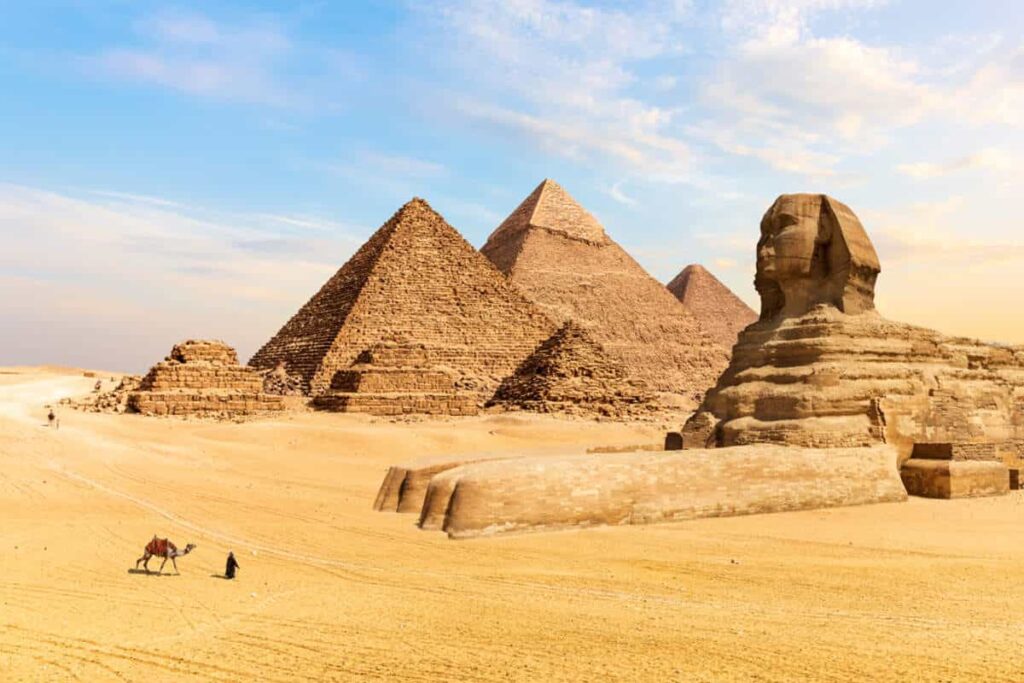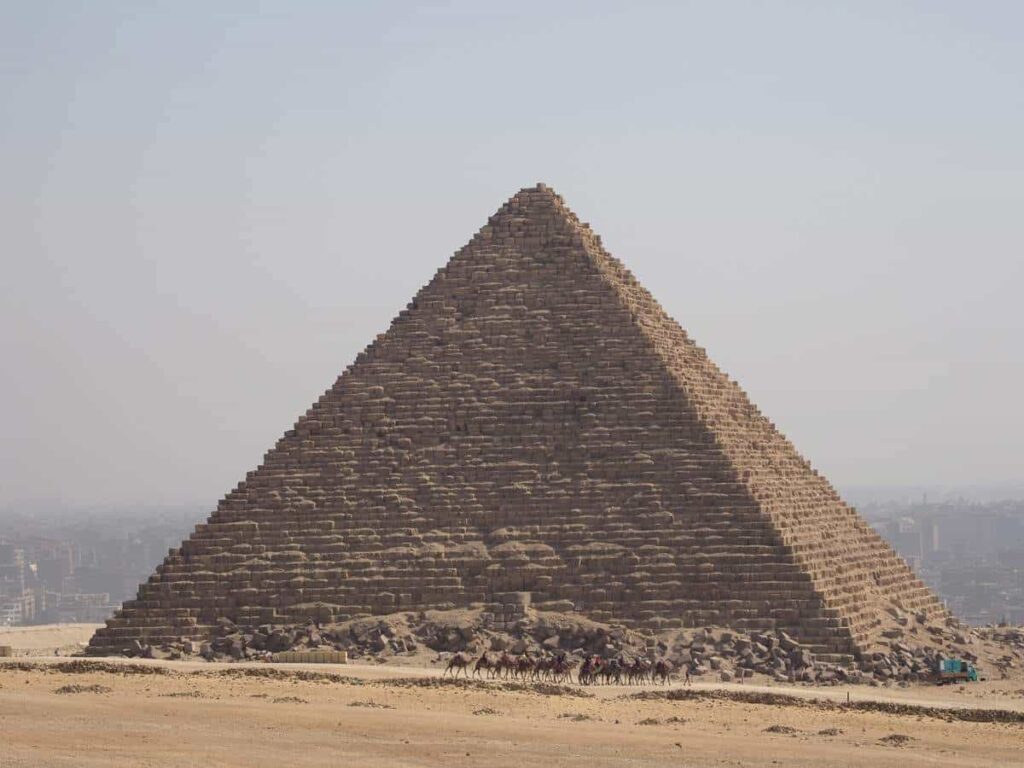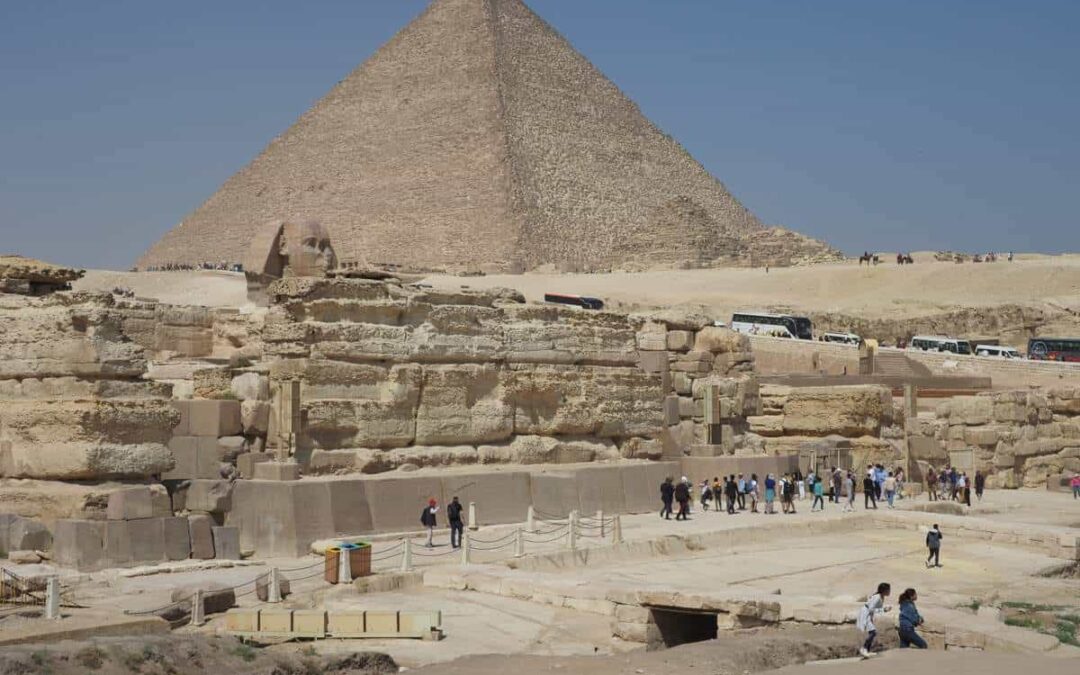This route through the funerary temples of Khufu, Khafre, and Menkaure reveals some of the best-kept secrets of the spectacular ancient Egyptian necropolis.
The pyramids on the Giza plateau have been a place of pilgrimage for travelers for twenty-five centuries, ever since Herodotus traveled to the land of the pharaohs and recorded everything he witnessed and heard in his History.
Following in Herodotus’ footsteps a century later, Alexander the Great conquered Egypt and marveled at its temples and buildings.
After the Macedonian conquest and the establishment of Alexandria, travelers and the curious began arriving on the banks of the Nile. Along with them came the first lists of the most extraordinary monuments and structures of the time.
Eventually, a list of the Seven Wonders of the Ancient World was compiled. Two of these Seven Wonders were found in Egypt: the Lighthouse of Alexandria and the Great Pyramid of Khufu in Giza.
Currently, the Hanging Gardens of Babylon, the Statue of Zeus in Olympia, or the Colossus of Rhodes are nothing more than names that evoke an almost forgotten past… but the pyramid of Khufu remains there, motionless, eternal, observing the passage of time and the constant influx of tourists that surround it.
It’s difficult to imagine a trip to Egypt without visiting the Giza plateau. The three great kings of the Fourth Dynasty were buried there: Khufu, Khafre, and Menkaure.
Today we know that this location was chosen due to its proximity to the capital (Memphis) and the Tura quarries (which were on the opposite side of the Nile, making it convenient to transport blocks via the river).
Around the three great pyramids, nobles, courtiers, and members of royalty were also buried, such as Hetepheres, the mother of Khufu. Inside her tomb, a fabulous funerary trousseau was discovered, which will soon be showcased at the new Grand Egyptian Museum.
Inside the Pyramid of Khufu
The Giza site is often crowded with tourists who have been making a pilgrimage to the site for centuries. Day after day, the same ritual of visits, photographs, and selfies is usually repeated.
Making a “different” visit to Giza is therefore quite a challenge. However, mass tourism typically follows well-established paths, and there are often interesting places that go unnoticed in the vicinity.
The interior of the Khufu Pyramid could be one of these places. Access requires an additional ticket. However, obtaining these tickets is not always easy due to the limited number of daily visitors.
If we want to enter the Great Pyramid, it is best to get up early. The reward will be entering Khufu’s burial monument through a winding corridor that was once dug by grave robbers.
We will then proceed through an ascending corridor constructed using a fascinating technique of block approximation, which created a vast empty space at the heart of the pyramid. Finally, we will arrive at the burial chamber where the granite sarcophagus, in which the ancient Egyptian king was laid to rest, is still located.
Attached to the eastern face of the pyramid, the side facing Cairo, we can see the remains of the basalt pavement of the Mortuary Temple of Khufu. This was the location where daily rituals for the deceased king were performed.
On both sides of the temple, aligned on a north-south axis, we discovered two large moats that were the Tombs of the Boats. These were used for the king’s final journey to the afterlife.
Although no boat remains were found inside, there are two similar cavities on the south side of the pyramid. In one, a disassembled boat is preserved, still intact. In the other, a boat was discovered in 1956, which has since been moved and assembled at the new Grand Egyptian Museum in 2021. The visit around the Khufu pyramid can be completed with a visit to the three Satellite Pyramids located near the Mortuary Temple.
Khafre’s Mortuary Temple
The next part of our visit to Giza could be the Pyramid of Khafre. Its proximity to the Pyramid of Khufu allows us to make the journey on foot, passing by some of the tombs built around the kings’ pyramids.
The queues to enter the interior of the inner pyramid are usually long. The visit is always worthwhile, but if we have already explored Khufu’s pyramid, there is a very interesting alternative: visiting Khafre’s Mortuary Temple. Unlike its predecessor, this temple retains a significant portion of its walls and is much larger in size.
To construct the Pyramid of Khafre, workers had to lower and level the bedrock of the area and took advantage of this process to extract some blocks that were later used as construction materials for the pyramid.
If we approach the northwest corner of the Pyramid of Khafre, we can see marks on the floor and partially surrounding walls, left by the workers when extracting the limestone blocks. This provides us with a glimpse of how the funerary monument was built.
If we have the time—and the weather isn’t too hot—we can take a walk to the Valley Temple of Khafre along the paved road that descends towards Cairo. It is a short journey of about 800 meters, which allows us to observe the Sphinx of Giza from an unusual perspective and, more importantly, with fewer people around us.
However, we cannot avoid the constant stream of tourist groups passing by in the Valley Temple of Khafre, as many want to capture a precious photo with the Sphinx of Giza in the background. In front of the temple, we can find the remains of the pier where boats docked in the past, having arrived at the necropolis through channels connecting the Nile.
The Valley Temple of Khafre is a rectangular and massive yet simple construction, made primarily with limestone and later adorned with Aswan red granite.
Inside, we discover several rows of square columns, also crafted from granite, making the temple one of the masterpieces of ancient Egyptian architecture. Among the walls and columns, we will find a small ascending corridor leading to the road connecting the Valley Temple with the Upper Temple.
From there, we can access a sort of balcony, offering a view of the Sphinx of Giza—a colossal monolithic statue with the body of a lion and a human head—carved on a natural rocky mound. This was the first grand statue in ancient Egypt.
The Viewpoint of the Valley and the Menkaure Pyramid
A great way to conclude our visit to the Giza plateau is by heading to the viewpoint located to the west of the pyramids, in the desert. From there, we can catch a glimpse of the city of 6 October (one of the cities surrounding Cairo) sprawling in the distance.
At the viewpoint, the silhouettes of the three magnificent pyramids of Giza come into view. Of course, we won’t be the only ones there. However, if we desire a more private experience, we can choose to explore the hills surrounding the viewpoint on foot or embark on a short camel excursion through the desert.
This way, we can make our way to the Menkaure Pyramid or find a vantage point to observe the perfectly aligned edges of the three grand pyramids.
Source: David Rull, National Geographic

